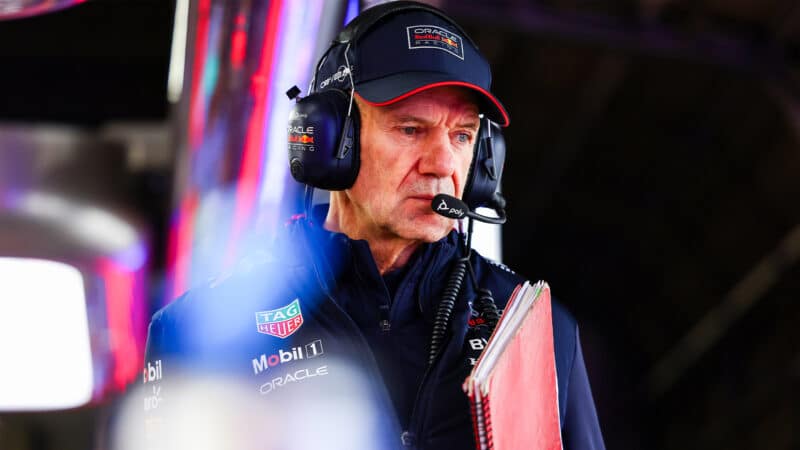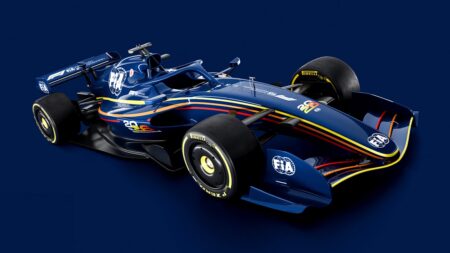At first glance, the new regulations limit the potential of controlling that wheel wake, with the aim of reducing downforce.
Mark Hughes has explained the need for this, given the reduction in engine power and the increased reliance on electrical energy. The FIA has described a downforce reduction of 30% in 2026.
The decrease could be even larger, assuming that the FIA is basing its figures on the initial projections for the last major regulation changes in 2022.
Since then, teams have been working non-stop to add more and more downforce to their cars, which would make the drop more significant.
Narrower tyres and front wing
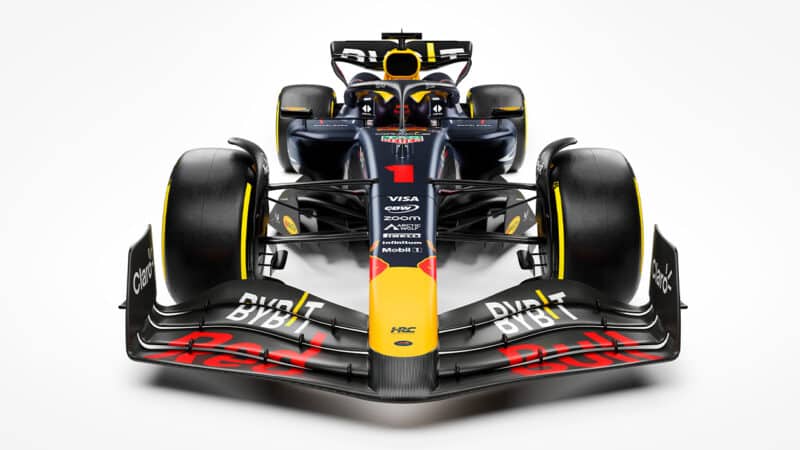
2024 Red Bull
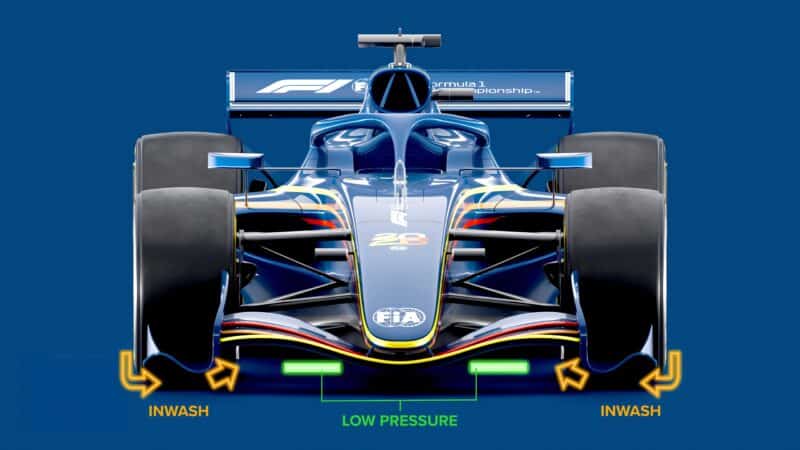
2026 prototype car
One of the measures has been to decrease the width of the tyres; the reduction in tyre surface area will lead to a significant reduction in drag and also a reduced wheel wake.
But that wheel wake will be far more difficult for aerodynamicists to control, starting at the very tip of the car. One obvious change for 2026 is the narrow-span front wing will generate more inwash compared to current regulation cars that have wider span front wings. The angle of the elements and endplates will direct air inwards, drawing the wheel wake to precisely where it’s unwanted: the leading edge of the floor.
It’s the opposite of what you want as an aerodynamicist, and it’s going to take some ingenuity to minimise the effect.
The wider footplates on each end of the wing will be welcomed though. If these are damaged, it will have less effect on the aerodynamic load than the loss of an endplate on one of this season’s cars — so light contact is less likely to ruin a driver’s race.
Floor leading edge
The leading edge of the floor, where airflow is directing into the underbody tunnels, as well as up and around the sidepods is a critical area. The cleaner the airflow, the more downforce you’ll generate.
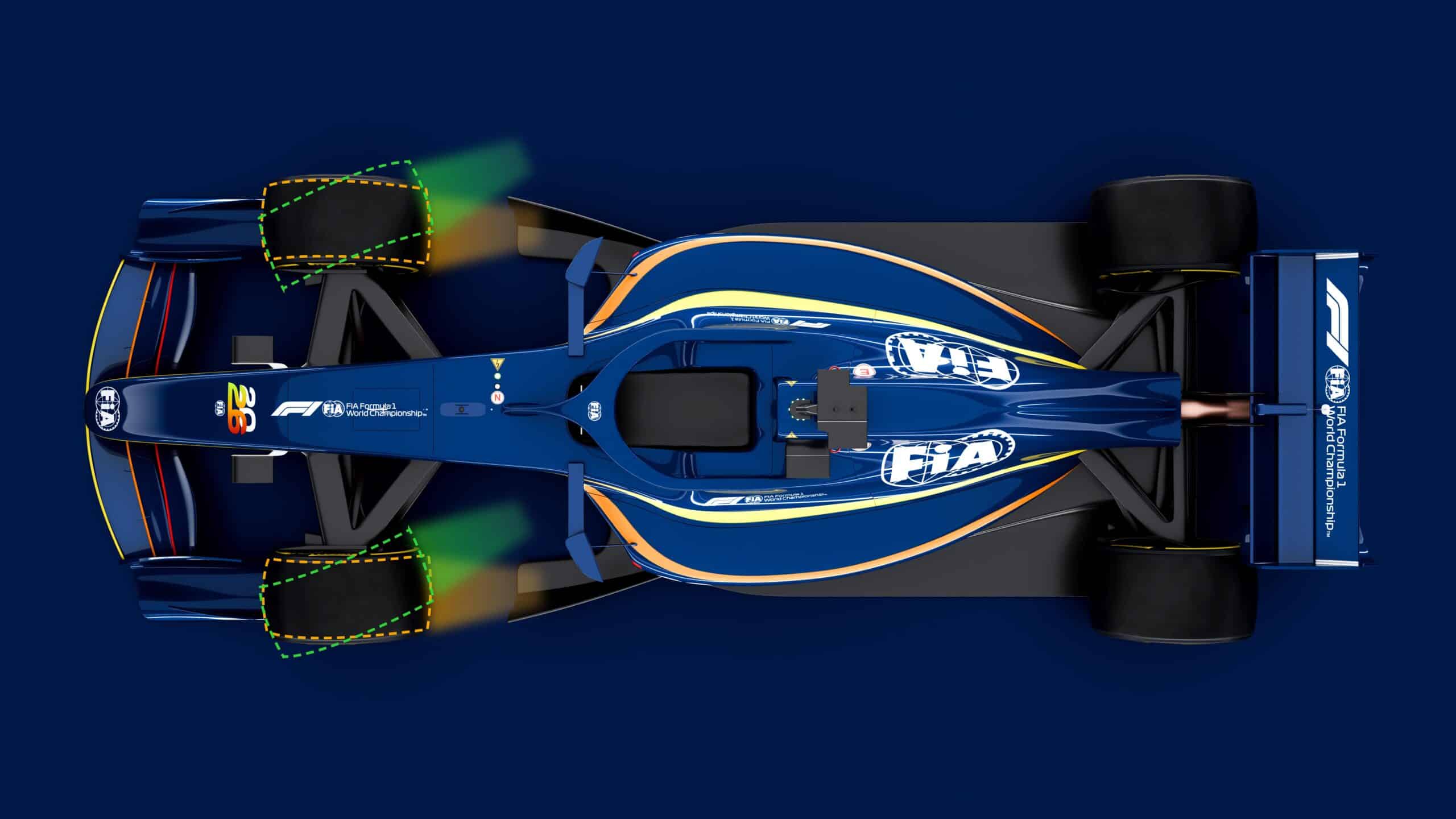
That objective won’t be helped by the new vanes that extend beyond the leading edge of the floor and obviously direct airflow inwards.
From the images and detail we’ve seen so far, these vanes look to be aligned for the wheels in a straight-ahead position — funnelling the wake unhelpfully towards the floor. But the wake’s trajectory changes when the wheels turn, which will then affect the turbulent air directed by the vanes.
The narrow span front wing and inwashing vane could make the cars more steer sensitive — where they behave very differently and unpredictably when cornering, affecting driver confidence and the ability to find a competitive set-up.
And it doesn’t stop there: the detail we’ve seen so far suggests that floor fences won’t be permitted: these strakes at the leading edge of the floor generate strong vortices that increase floor load but are also responsible for making the current generation of cars sensitive to ride height change. Removing the fences will reduce load but help to make them less sensitive to changes in ride height.
Active aerodynamics
Some of the changes will be easier to adapt to. Active aerodynamics will see both front wing and rear wing flaps open on higher-speed sections of circuits.
While the front wing doesn’t generate a large proportion of overall drag, making two of these elements active will allow cars to run softer front suspension, as the car will compress less at higher speeds. This will make it more stable when combined with the similarly soft suspension (soft in F1 terms) at the rear.
More to come
But this is just the start. There’s a lot of detail missing, particularly when it comes to the freedom to design the floor vane and the floor edges. This will all be added in the coming months when we’ll have a fuller picture of the challenges — and opportunities that lie ahead.
What appears to be evident though is that we’ll have closer racing. If you reduce the potential downforce, the cars are going to be closer, and some of the changes, like reducing the height of the rear diffuser will help to limit the turbulent wash at the back, which will help cars to follow closer.
